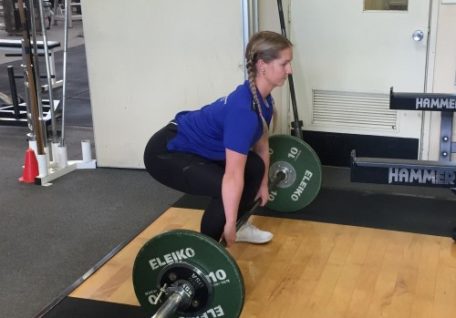Plyometric exercises are a training method that are dynamic and explosive in nature. The exercise aims to train the force and speed of the muscles, producing characteristics of the muscles through the stretch–shortening cycle (SSC).
The types of movements involve rapid explosive concentric movements, preceded by eccentric contractions. These explosive movements elicit enhanced force production from the stretch–shortening cycle.
Plyometric exercises are commonplace in training plans of athletes in sports and events that involve throwing, jumping and sprinting. These types of sports and exercises require an element of speed combined with strength, which is best trained through plyometric exercises.
The types of training activities for plyometric training involves bounding, hopping, jumping, sprinting and throwing movements.
The Stretch–Shortening Cycle
Plyometric exercises use components of the stretch–shortening cycle to facilitate strength and power. These physiological components include:
- Series Elastic Component:
As a muscle lengthens during an eccentric contraction it produces and then stores elastic energy. If the muscle then quickly contracts concentrically the stored elastic energy that has been generated can be transferred and added to the force of the concentric contraction, making it more explosive and powerful.
- Stretch Reflex:
Activation of the sensory organs within the muscle (Muscle Spindles) during a quick eccentric contraction, initiates a reflexive concentric contraction of the same muscle. This involuntary reflex adds strength and power to the concentric contraction of a movement.
To activate the stretch shortening cycle, plyometric exercises involve 3 phases:
- Eccentric (counter movement)
- Amortisation (pause between eccentric and concentric phases)
- Concentric (explosive contraction)
If the duration of the Amortisation phase is too long, stored energy is lost. Ground contact time must be reduced for maximal effect.
Common plyometric activities include:
- Hops
- Jumps
- Leaps
- Bounds
- Depth Jumps
- Split Lunges
- Box Jumps
- Explosive Push Ups
- Medicine Ball Throws
Plyometric Guidelines
Due to its advance nature, the following guidelines should be considered when prescribing and instructing plyometric exercises:
- Athletes require excellent levels of existing strength and athletic conditioning, plus good technique and understanding of drills.
- Conduct a thorough warm up
- Perform on a soft surface – firm, but forgiving
- Enforce correct landing technique to absorb forces
- 1 to 2 sessions per week is ample (no more than 20 minutes per session is needed)
- Maximum speed and effort are required
- Consider impact on weight bearing joints
- Minimise ground contact time
- Load on the body is high – pay attention to amount of contacts, calculate load by measuring difficulty of drill by amount of repeats to a measure of volume
If you enjoyed learning about this, and want to expand your knowledge on a whole range of fitness related subjects, then studying for your Certificate III and IV in Fitness would be perfect for you. You’ll also be able to become a personal trainer upon completion. Fill out the form below for more information.







